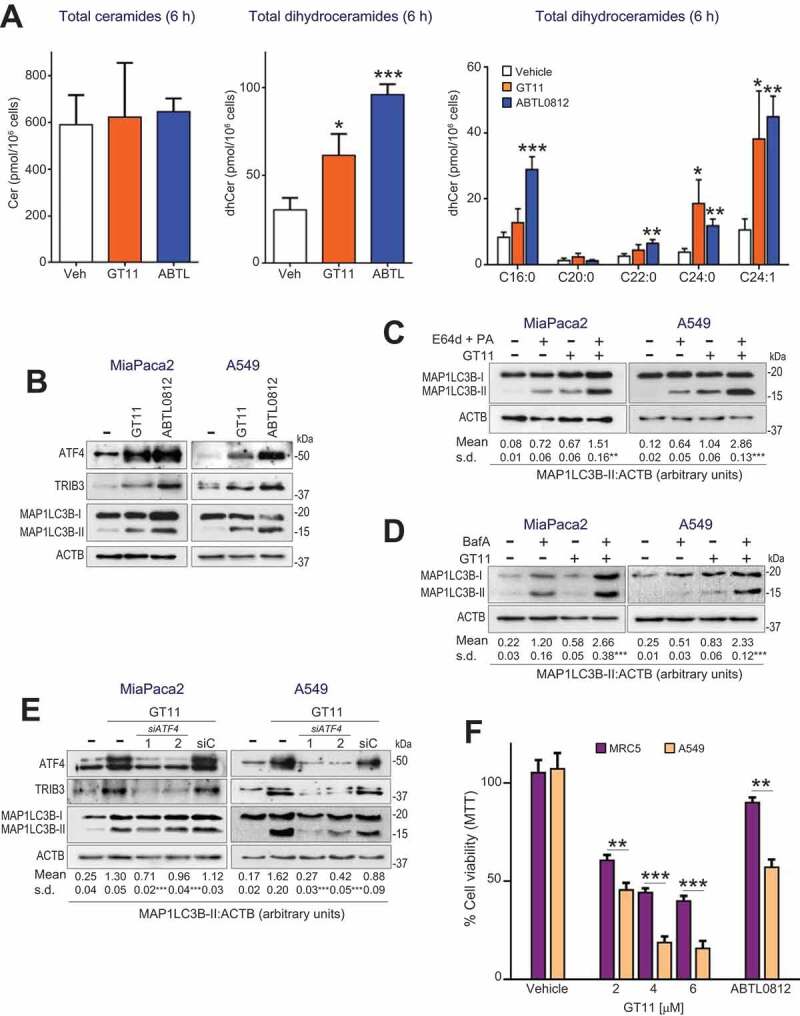Figure 7.

DEGS1 specific inhibitor GT11 induces accumulation of dihydroceramides, ER stress, dynamic autophagy and selective cancer cell death. (a) MiaPaca2 cells were treated for 6 h with vehicle, 6 µmol/L GT11, or 100 µmol/L ABTL0812, and total ceramides, dihydroceramides and molecular species of dihydroceramides were quantified. Each value is the mean ± SD of three different experiments. (b–e) DEGS1 inhibition induces ER stress-mediated dynamic autophagy. (b) cCells were treated 48 h with 5 µmol/L GT11 and levels of ER stress markers ATF4 and TRIB3 and MAP1LC3B lipidation analyzed by immunoblotting. Similar results were obtained in three separate experiments. (c,d) Cells were preincubated 3 h with vehicle or lysosomal protease inhibitors E64d (10 µmol/L) and pepstatin-A (PA, 10 µg/mL) (c), or 50 nm bafilomycin-A (BafA) (d) before treatment with 6 µmol/L GT11 for 24 h. Cells were lysed and MAP1LC3B lipidation was visualized by immunoblotting. Similar results were obtained in three different experiments. (e) ATF4 silencing prevents GT11-induced autophagy. Cells were transfected with scramble siRNA (siC) or two different ATF4-selective siRNAs, and then treated with 100 µmol/L ABTL0812 for 18 h. Levels of ATF4, TRIB3, MAP1LC3B and ACTB protein expression were analyzed by immunoblotting. The corresponding quantification of MAP1LC3B-II levels referred to ACTB are indicated under the panels. Results representative of two separate experiments. (f) Non-tumoral cells show lower sensitivity to DEGS1 inhibitor GT11. Human lung fibroblast MRC5 and squamous NSCLC H157 cells were treated with the 30 µM ABTL0812 or with the indicated concentration of GT11 for 48 h, and cell viability was determined by MTT assay. Results representative of three separate experiments. *, P < 0.05; **, P < 0.005; ***, P < 0.001 from vehicle-treated cells
